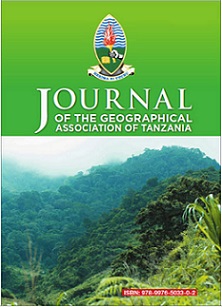The Determinants of Migration in Tanzania: The Case of Ileje District
Abstract
As a former colonial labour reserve, the periphery and less developed district compared with other districts inMbeya region and Tanzania at large, Ileje is still a major area of rural-rural and rural-urban migration. Out-
migration in the district is increasing despite the introduction of various land reforms and crop innovations
aimed at increasing productivity. Migration from Ileje is also increasing despite the area being turned into
autonomous district in 1975 (formally part of Rungwe district). Th is occurs despite the growth of trading centres
and non-agricultural employment. Also, as a result of an increase of population pressure, the number of people
migrating to search for livelihoods away from their areas of domicile is rising with time. Due to soil erosion,
coupled with inadequate replenishment of soil nutrients after harvests, the productivity of the land suff ers
immensely. Th is severe land degradation and poverty have led the Ndali and Lambya people, the major ethnic
groups in Ileje district, to migrate especially to Mbozi district. Th erefore, by using 496 heads of the households
sampled, this paper attempts to answer the research question: what are the determinants of migration in Ileje
district? Th e major fi nding is that population pressure is a major determinant of out-migration in Ileje district
particularly its Bundali division. Th is is because most of the heads of households in the area have less than one
acre of land with poor quality. In fact, land shortage and fragmentation is a threat to the people in the district.
In order to reduce excessive soil erosion people should be encouraged by the government and other stakeholders
to conserve that environment by planting trees in steep slopes especially in Undali hills and sustainable use of
forest resources by introducing improved cooking stoves as well as management of forests so as to reduce the rate
of tree cutting for fuel woods and commercial logging.
Published
2018-05-04
Issue
Section
Articles


